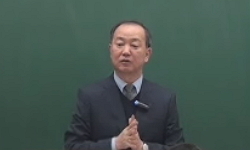Laser surface texturing (LST), a surface engineering modification, has been considered as one of the new processes used to improve tribological characteristics of materials by creating artificially patterned microstructure on the contact surface of me...
http://chineseinput.net/에서 pinyin(병음)방식으로 중국어를 변환할 수 있습니다.
변환된 중국어를 복사하여 사용하시면 됩니다.
- 中文 을 입력하시려면 zhongwen을 입력하시고 space를누르시면됩니다.
- 北京 을 입력하시려면 beijing을 입력하시고 space를 누르시면 됩니다.
https://www.riss.kr/link?id=A106111959
- 저자
- 발행기관
- 학술지명
- 권호사항
-
발행연도
2015
-
작성언어
English
- 주제어
-
등재정보
KCI등재
-
자료형태
학술저널
- 발행기관 URL
-
수록면
287-293(7쪽)
- 제공처
- 소장기관
-
0
상세조회 -
0
다운로드
부가정보
다국어 초록 (Multilingual Abstract)
Laser surface texturing (LST), a surface engineering modification, has been considered as one of the new processes used to improve tribological characteristics of materials by creating artificially patterned microstructure on the contact surface of mechanical components. In LST technology, the laser is optimized to obtain or manufacture the dimples with maximum precision. The micro-dimples reduce the coefficients of friction and also improve the wear resistance of materials. This study investigates the effect of dimple density is investigated. For this purpose, a ball-on-disc type tester is used with AISI 52100 bearing steel as the test material. Discs are textured with a 5% and 10% dimple density. Experimental work is performed with normal loads of 5 N, 10 N, and 15 N under a fixed speed of 150 rpm at room temperature. The effect of the textured surface is compared to that of the untextured one. Experimental results show that the textured surface yields lower friction coefficients compared to those of untextured surfaces. Specifically, the 10% dimple density textured surface shows better friction reduction behavior than the 5% dimple density textured sample, and has an 18% improvement in friction reduction compared with the untextured samples. Microscopic observation using a scanning electron microscope (SEM) shows that the major friction mechanisms of the AISI 52100 bearing steel are adhesion, plastic deformation, and ploughing.
동일학술지(권/호) 다른 논문
-
미래 Tribology의 연구 방향에 대하여 ( Future Directions in Tribology Research )
- 한국트라이볼로지학회
- 강석춘
- 1988
- KCI등재
-
내연기관용 윤활유 첨가제의 국산화에 대한 연구 ( 2 ) ( Syntheses of Additives for Internal Combustion Engine Oil )
- 한국트라이볼로지학회
- 김종호
- 1988
- KCI등재
-
부식방지제의 선택과 적용 ( Selection & Application of Rust Preventives )
- 한국트라이볼로지학회
- 박봉균
- 1988
- KCI등재
-
액정의 윤활제 응용가능성 연구 ( A Study of Thermotropic Liquid Crystal as a Potential Lubricant )
- 한국트라이볼로지학회
- 안영재
- 1988
- KCI등재





 ScienceON
ScienceON






